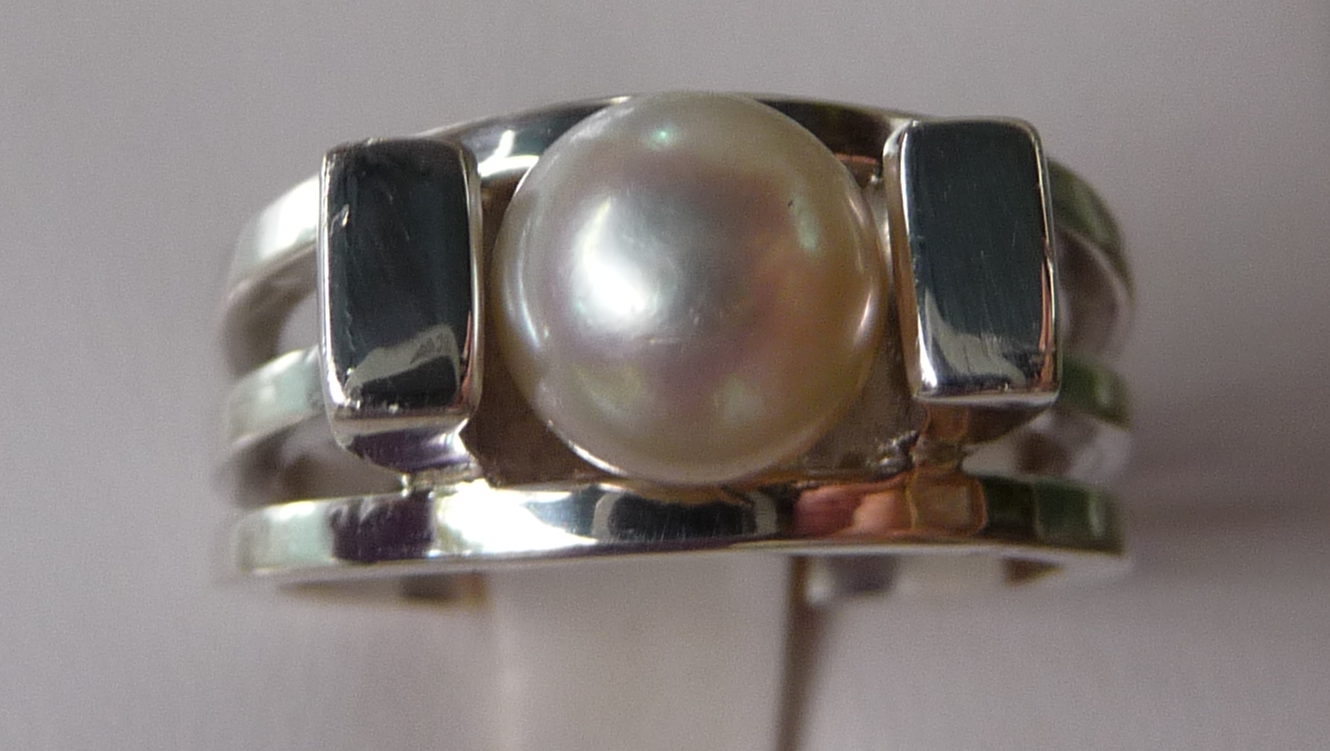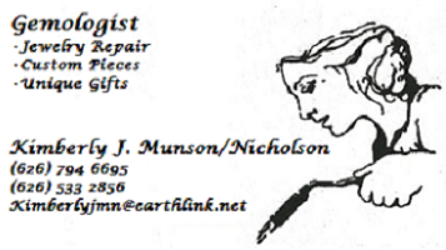Jewelry Maintenance
What to expect from your jewelry over long time wear
I suggest this good rule of thumb: Every 90 days, have your diamonds cleaned and checked to make sure the stones are tight and that the metal holding your stones is still strong. If you feel your ring catching on your clothing, have it looked at. Luckily, metal can be added to worn prongs to prolong the integrity of the setting, and to avoid the disappointment of a lost stone. If there is too much wear, the head will need to be replaced. We wear our favorite rings every day without realizing how soft gold really is. Since it can be scratched with your fingernail, it will wear away more quickly when worn next to another ring. It may be a wise choice to have them soldered together.
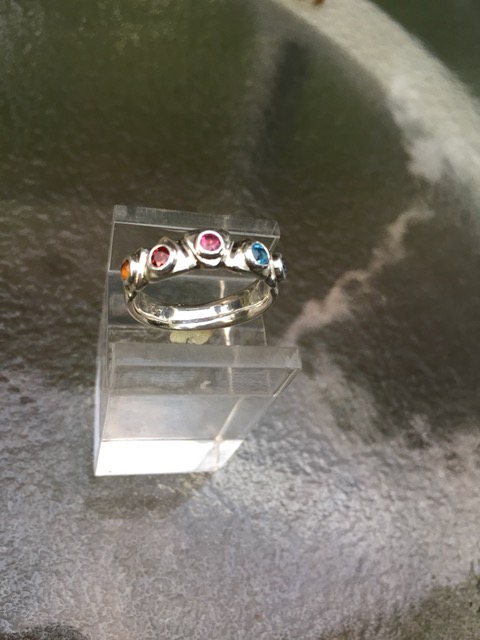
Jewelry Care
Maintaining our special heirlooms doesn’t take too much effort and the rewards are huge!
Whenever you take off your rings to do gardening or heavy work, have one special spot that they always sit to wait for you. Make sure it’s not over the sink or by the toilet 🙂
Always check for flaws.
If you feel the prongs on your stone setting catching on clothing or towels, if your necklace clasp is very thin, or if your rings are too loose, then you need to take them off right away and not wear them until you get in contact with a jeweler. Have your piece checked out before you wear it again, as it’s worth the wait. You don’t want to risk loosing your special piece!
Give them a bath!
A fast and easy way to clean your jewelry is with hot soapy water. Warning, this method is not for use with glued pieces, pearls, or anything that be damaged by very hot soapy water. Find a coffee cup, dish soap, a soft toothbrush, and a big paperclip. Fill the coffee cup up with water and add a few drops of the dish soap. Microwave it on high for about a minute, or until the water is very hot. Unfold the paper clip and hang your rings on one side and hook the other end on the side of the cup, and drop necklaces to the bottom. Let them soak for 5-10 minutes (giving the soap time to dissolve the fats and dirt that have built up in all the crevices). Take out each piece one at a time and use the soft brushed toothbrush to gently scrub the whole piece clean with the soapy water (Tip: be nowhere near an open sink drain). Take advantage of the small toothbrush bristles to get into the holes behind stones (designed to let light through and increase sparkle) and between the prongs of stone settings. Rinse the pieces in a cup or bowl of clean water and lie them to dry on a towel . You will be surprised at how they sparkle!!
Diamond Terminology
We use the “5 C’s” to define diamonds.
CUT has to do with how the diamond is shaped. It can be rounded, emerald shaped (rectangle), oval, cushion (square with slightly rounded corners), princess (square), pear, or marquise (boat) shaped. See the picture below for the most common diamond shapes. Each raw diamond is inspected and a shape is chosen that maximizes the final diamond size and grade. A master cutter then specially cuts the diamond to strategically maximize the dispersion of light through the resulting facets (flat planes on the surface of the final diamond shape). This affects the rainbow of colors that you see flashing from the depths of the stone (called dispersion) as well as the bright white reflections (called brilliance) that you see when the diamond is placed on white paper or in a setting in the sun. A well cut diamond should sparkle and blind you with light and colors. Each specific diamond will fling it’s own personal range of rainbow colors into the air.
COLOR in a diamond is graded with letter grades where D is totally colorless. E, F, G, are very nearly colorless and H, I & J are what we call commercial stones (A, B and C don’t exist). In the jewelry industry, the color in a commercial stone is considered to be very slight and not offensive. Most customers prefer colors in the D, E & F range, however the price of the diamond will directly reflect the purity of color. The lower the color grade, the cheaper the stone.
CLARITY refers to the amount of inclusions (i.e. specks, crystals, or “feathers”) seen within a stone or blemishes seen on the surface of the stone when it is magnified to 10x magnification. We use abbreviations to signify the amount of inclusions in each stone. A diamond graded as Very Very Slightly Included (VVS) has almost no visible inclusions; it has minute inclusions that are difficult for a skilled grader to see. Very Slightly Included (VS) diamonds have minor inclusions that are difficult to somewhat easy for a skilled grader to see. The inclusions that are there, are very few and they are small and located when they won’t be noticed to the naked eye. Slightly Included (SI) means that the inclusions may be slightly darker and somewhat visible, but not to a point where it detracts from the stone (easily seen by a grader at 10x magnification). A diamond that is graded as Included (I) has inclusions visible to the naked eye and may not be desirable for fine jewelry.
CARAT is used to measure the weight of a diamond. One carat has 100 points in it. For example, a 50 point stone would be a 1/2 carat in weight.
COST is always a factor, each stone is judged by eye and the cost will vary from stone to stone, even if it weighs the same because of the four variables above and availability.
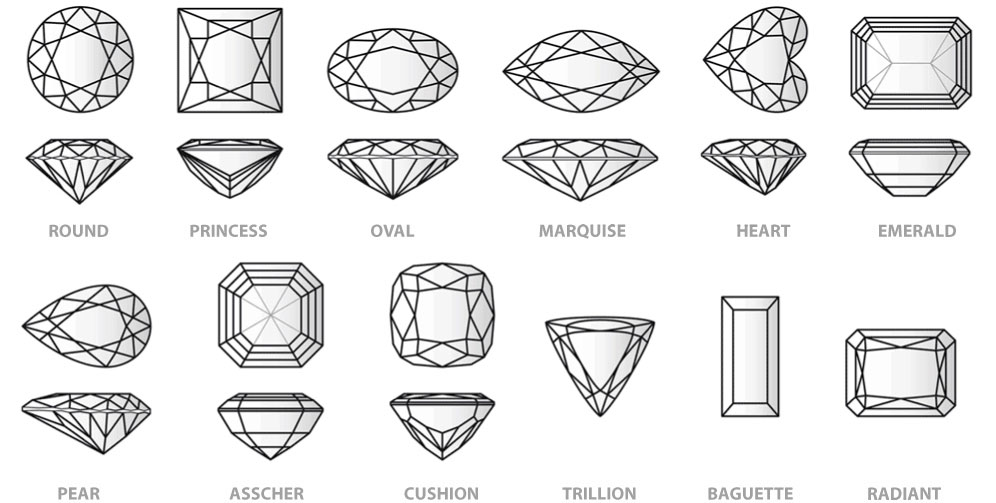
The Properties of Gold
Gold in it’s purest state is measured as 24 Karat.
Why do we use the word “Karat” to measure the purity of gold, and “carat” the size of a diamond? In ancient times when gold, diamonds, and other gems were weighed at bazaars, the seed of a carab tree was used to balance the scales. The Italian word carato, the Arab word girat, and the Greek word Keration all mean carob. Karat with a “K” refers to the purity of gold (abbreviated “Kt”), and when spelled with a “c”, it refers to the weight of gemstones (abbreviated as “ct.”).
Did you know that pure gold is so soft that it can be scratched with your fingernail? 24 Karat gold has a hardness of 2 ½ on the Mohs hardness scale.
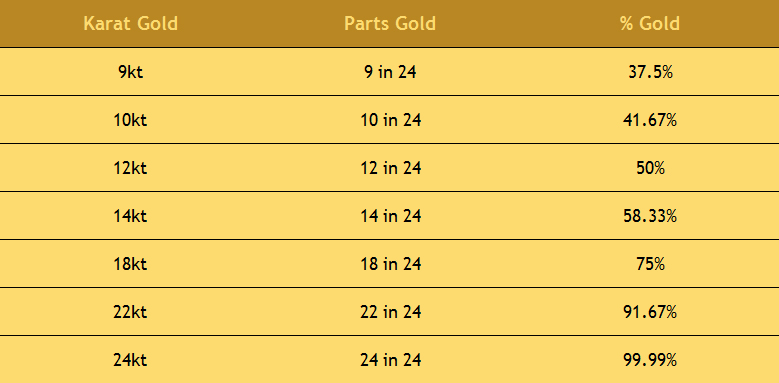
Gold Filled
What is gold filled?
Gold filled is an amount of base metal covered by a sheet of at least 10kt quality gold, which are joined together through heat, pressure, or welding. The weight of the karat gold covering, must be at least 1/20th of the total weight of the whole piece. For instance, a stamping might read “1/20 14kt gold filled” which means that the 14kt gold layer makes up 1/20th of the total metal weight of the piece. Sometimes it will be stamped “1/20th 14kt GF”.
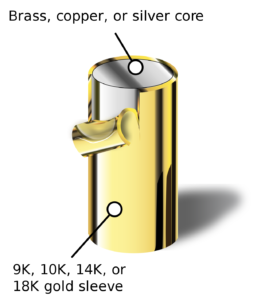
Pearls
A gem from the ocean
Pearls from oysters in the wild, called natural pearls, are naturally occuring and are the most rare and expensive.
Cultured or farmed pearls come from farmed pearl oysters and freshwater mussels, and are the majority of pearls that you will see on the market. You may already know that cultured pearls have a nucleus that is made up of a small piece of calcium based shell. The manufacturer carefully plants the tiny shell in a special oyster and tenderly cares for and cleans the oyster until the finished pearl is harvested. The oyster applies nacre to the small piece of shell in layers to protect it’s soft flesh from the annoyance.
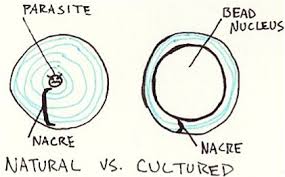
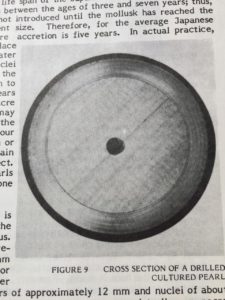
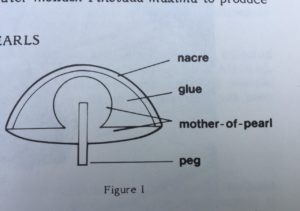
You can tell if a pearl is real by gently rubbing it across your front teeth. If it is real nacre, it will feel slightly gritty.
You can judge a pearl by it’s color, shape, and luster. Dull pearls are often less expensive than those with a higher luster.
Pearls get put on last…
Silk thread is traditionally used for stringing drilled pearls to prevent excessive wear on the inside of the bead. Take a good look at your strung pearls; note if the knots between them are beginning to fray or if the space between the pearls has stretched. If so, it’s time to have them restrung.
When you are preparing to go out for the evening, apply your perfume and special lotions before you put on your pearls. If you don’t, the alcohol and acids in beauty products will eat away at the nacre surface, leaving your fine pearls dull and pitted. After use, I rub them slightly on a cloth to remove excess oils, and wrap them in an old handkerchief of my Grandfather’s. This keeps them from being scratched against other jewelry and reminds me of my family history.
